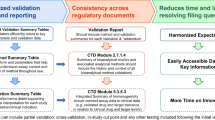Abstract
The use of monoclonal antibodies (mAbs) has now gained a niche as an epochal breakthrough in medicine. Engineered antibodies (Abs) currently account for over 30% of biopharmaceuticals in clinical trials. Several methods to generate human mAbs have evolved, such as (1) immortalization of antigen-specific human B cell hybridoma technology, (2) generation of chimeric and humanized antibody (Ab) from mouse Ab by genetic engineering, (3) acquisition of antigen-specific human B cells by the phage display method, and (4) development of transgenic mice for producing human mAbs. Besides these technologies, we have independently developed a method to generate human mAbs by combining the method of in vitro immunization using peripheral blood mononuclear cells and the phage display method. In this paper, we review the developments in these technologies for generating human mAbs.
Similar content being viewed by others
References
Boulianne GL, Hozumi N, Shulman MJ (1984) Production of functional chimaeric mouse/human antibody. Nature 312:643
Bradbury AR, Marks JD (2004) Antibodies from phage antibody libraries. J Immunol Meth 290:29
Carter P (2001) Improving the efficacy of antibody-based cancer therapies. Nat Rev Cancer 1:118
Carter PJ (2006) Potent antibody therapeutics by design. Nat Rev Immunol 6:343
Chowdhury PS, Wu H (2005) Tailor-made antibody therapeutics. Methods 36:11
Gonzales NR, De Pascalis R, Schlom J, Kashmiri SV (2005) Minimizing the immunogenicity of antibodies for clinical application. Tumour Biol 26:31
Green LL, Hardy MC, Maynard-Currie CE, Tsuda H, Louie DM, Mendez MJ, Abderrahim H, Noguchi M, Smith DH, Zeng Y et al (1994) Antigen-specific human monoclonal antibodies from mice engineered with human Ig heavy and light chain YACs. Nat Genet 7:13
Ho M, Kreitman RJ, Onda M, Pastan I (2005) In vitro antibody evolution targeting germline hot spots to increase activity of an anti-CD22 immunotoxin. J Biol Chem 280:607
Hoogenboom HR (2002) Overview of antibody phage-display technology and its applications. Methods Mol Biol 178:1
Hoogenboom HR (2005) Selecting and screening recombinant antibody libraries. Nat Biotechnol 23:1105
Ichikawa A, Katakura Y, Teruya K, Shuichi H, Shirahata S (1999) In vitro immunization of human peripheral blood lymphocytes: establishment of B cell line secreting IgM specific for cholera toxin b subunit from lymphochtes stimulated with IL-2 and IL-4. Cytotechnology 31:131
Jones PT, Dear PH, Foote J, Neuberger MS, Winter G (1986) Replacing the complementarity-determining regions in a human antibody with those from a mouse. Nature 321:522
Kipriyanov SM, Le Gall F (2004) Generation and production of engineered antibodies. Mol Biotechnol 26:39
Kohler G, Milstein C (1975) Continuous cultures of fused cells secreting antibody of predefined specificity. Nature 256:495
Lonberg N (2005) Human antibodies from transgenic animals. Nat Biotechnol 23:1117
Lonberg N, Taylor LD, Harding FA, Trounstine M, Higgins KM, Schramm SR, Kuo CC, Mashayekh R, Wymore K, McCabe JG et al (1994) Antigen-specific human antibodies from mice comprising four distinct genetic modifications. Nature 368:856
Lowe D, Jermutus L (2004) Combinatorial protein biochemistry for therapeutics and proteomics. Curr Pharm Biotechnol 5:17
Marks JD, Hoogenboom HR, Bonnert TP, McCafferty J, Griffiths AD, Winter G (1991) By-passing immunization. Human antibodies from V-gene libraries displayed on phage. J Mol Biol 222:581
Martin A, Bardwell PD, Woo CJ, Fan M, Shulman MJ, Scharff MD (2002) Activation-induced cytidine deaminase turns on somatic hypermutation in hybridomas. Nature 415:802
McCafferty J, Griffiths AD, Winter G, Chiswell DJ (1990) Phage antibodies: filamentous phage displaying antibody variable domains. Nature 348:552
Morrison SL, Johnson MJ, Herzenberg LA, Oi VT (1984) Chimeric human antibody molecules: mouse antigen-binding domains with human constant region domains. Proc Natl Acad Sci USA 81:6851
Muramatsu M, Sankaranand VS, Anant S, Sugai M, Kinoshita K, Davidson NO, Honjo T (1999) Specific expression of activation-induced cytidine deaminase (AID), a novel member of the RNA-editing deaminase family in germinal center B cells. J Biol Chem 274:18470
Ober RJ, Radu CG, Ghetie V, Ward ES (2001) Differences in promiscuity for antibody-FcRn interactions across species: implications for therapeutic antibodies. Int Immunol 13:1551
Reichert JM, Rosensweig CJ, Faden LB, Dewitz MC (2005) Monoclonal antibody successes in the clinic. Nat Biotechnol 23:1073
Riechmann L, Clark M, Waldmann H, Winter G (1988) Reshaping human antibodies for therapy. Nature 332:323
Sanz L, Cuesta AM, Compte M, Alvarez-Vallina L (2005) Antibody engineering: facing new challenges in cancer therapy. Acta Pharmacol Sin 26:641
Verhoeyen M, Milstein C, Winter G (1988) Reshaping human antibodies: grafting an antilysozyme activity. Science 239:1534
Yamane-Ohnuki N, Kinoshita S, Inoue-Urakubo M, Kusunoki M, Iida S, Nakano R, Wakitani M, Niwa R, Sakurada M, Uchida K, Shitara K, Satoh M (2004) Establishment of FUT8 knockout Chinese hamster ovary cells: an ideal host cell line for producing completely defucosylated antibodies with enhanced antibody-dependent cellular cytotoxicity. Biotechnol Bioeng 87:614
Yamashita M, Katakura Y, Shim SY, Matsumoto S, Tamura T, Morihara K, Aiba Y, Teruya K, Tsuchiya T, Shirahata S (2002) Different individual immune responses elicited by in vitro immunization. Cytotechnology 40:161
Yoshikawa K, Okazaki IM, Eto T, Kinoshita K, Muramatsu M, Nagaoka H, Honjo T (2002) AID enzyme-induced hypermutation in an actively transcribed gene in fibroblasts. Science 296:2033
Author information
Authors and Affiliations
Corresponding author
Rights and permissions
About this article
Cite this article
Yamashita, M., Katakura, Y. & Shirahata, S. Recent advances in the generation of human monoclonal antibody. Cytotechnology 55, 55–60 (2007). https://doi.org/10.1007/s10616-007-9072-5
Received:
Accepted:
Published:
Issue Date:
DOI: https://doi.org/10.1007/s10616-007-9072-5




